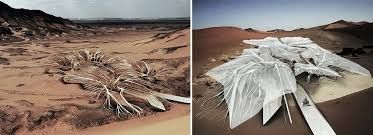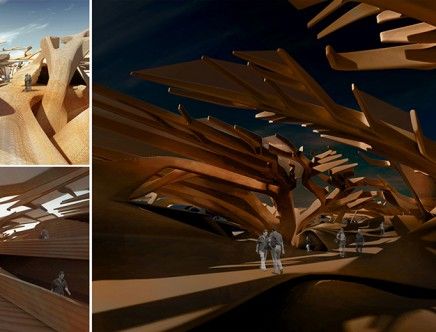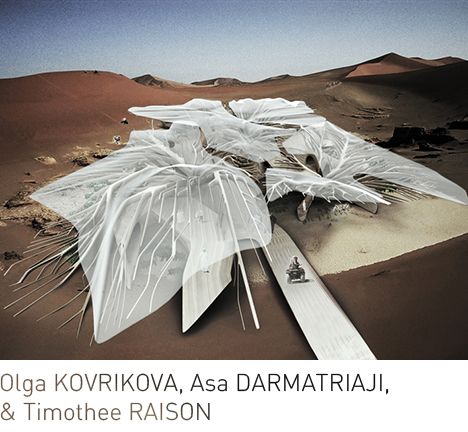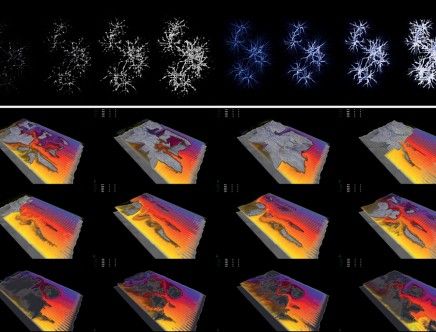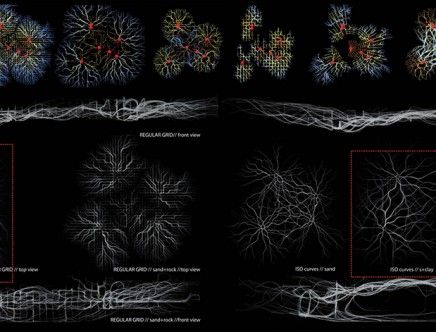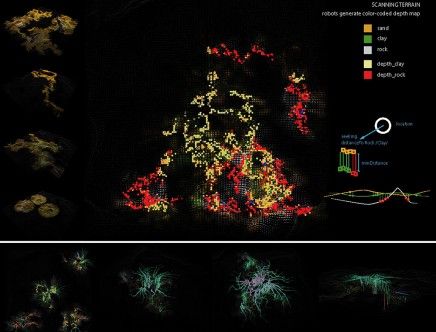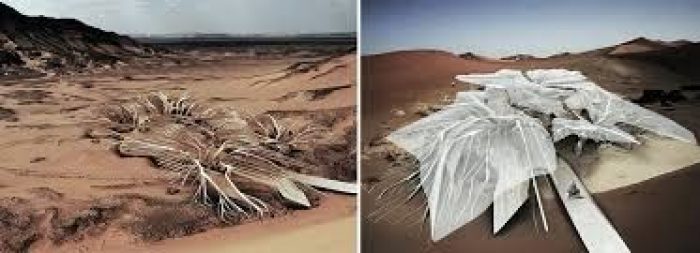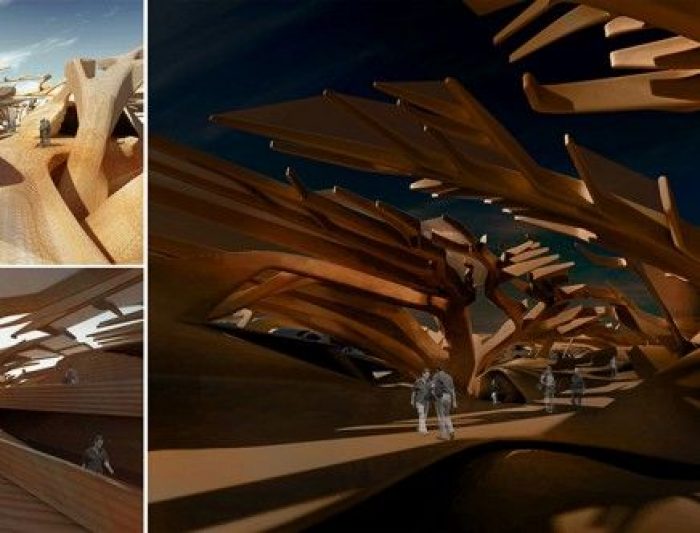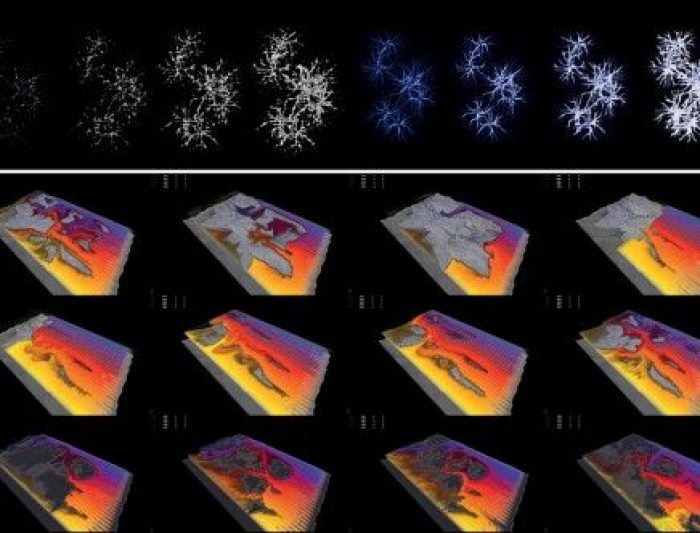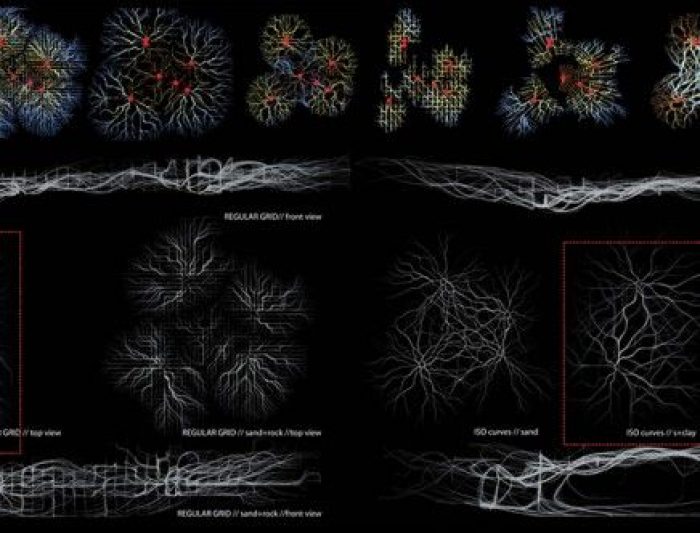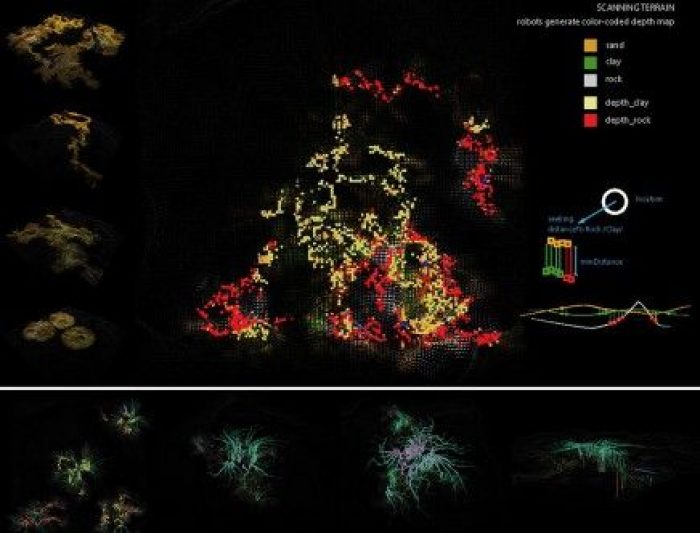DuneLab is a team of architects whose research is focused on discovering and developing possibilities for living conditions in desert environments. Their methodology includes the usage of robotic processes in order to gain environmental and geological data for building, using sand sintering technology.
 In their research project on desert housing, the team has looked at the sand sintering solar machine by MA Design Products student Markus Kayser. According to their research on Kayser’s experiments, the desert environment offers energy and material in abundance and what he has done was to produce 3D printed glass objects by using sunlight and sand. Markus however, never used the standard 3D printing machine – instead, the sunlight functioned as the rays, and the sand was a replacement for the resin which is otherwise used by 3D printers. What Markus Kayzer has investigated as a new solar power production tool, the DuneLab team has developed further into exploring the option of architectural design in a desert environment.
In their research project on desert housing, the team has looked at the sand sintering solar machine by MA Design Products student Markus Kayser. According to their research on Kayser’s experiments, the desert environment offers energy and material in abundance and what he has done was to produce 3D printed glass objects by using sunlight and sand. Markus however, never used the standard 3D printing machine – instead, the sunlight functioned as the rays, and the sand was a replacement for the resin which is otherwise used by 3D printers. What Markus Kayzer has investigated as a new solar power production tool, the DuneLab team has developed further into exploring the option of architectural design in a desert environment.
 Inspired by the specific dune patterns and erosion processes, the team creates a design based on striae, contours, and caverns in order to complete the visual aesthetics of the object. The design process starts off with an initial scan of the landscape with the use of swarming robots for the gaining of geological data and conditions. Afterwards, the team is able to generate a Height map with the geological consistency of the area and the next stage is set: mapping the building on site, excavating and 3D printing.
Inspired by the specific dune patterns and erosion processes, the team creates a design based on striae, contours, and caverns in order to complete the visual aesthetics of the object. The design process starts off with an initial scan of the landscape with the use of swarming robots for the gaining of geological data and conditions. Afterwards, the team is able to generate a Height map with the geological consistency of the area and the next stage is set: mapping the building on site, excavating and 3D printing.
 Further on, structural elements functioning as shading systems and an overall structural framework of the building are added. Horizontal and underground expansions are also taken into consideration, according to the team. Retaining walls for protection from extreme natural conditions are added, and also openings for light intensity control. DuneLab have also created an artificial landscape that is in contrast with the natural setting, however it speaks for integration between the building and the overall landscape.
Further on, structural elements functioning as shading systems and an overall structural framework of the building are added. Horizontal and underground expansions are also taken into consideration, according to the team. Retaining walls for protection from extreme natural conditions are added, and also openings for light intensity control. DuneLab have also created an artificial landscape that is in contrast with the natural setting, however it speaks for integration between the building and the overall landscape.
DuneLab further explain they have gained inspiration from innovative technological instruments such as: the new CNC drilling machine, the composite D-Shape 3-D printing machine by Enrico Dini, and most importantly: the geological scanner which is self-sufficient and uses locally extracted/locally available sources. The human element involved requires for more than just light intensity control: there are narrow and protected pedestrian pathways, striated walls and built-in furniture and the areas underneath are shaded using fabric shading systems . DuneLab’s research project explores not only an extreme environmental condition for the development of urban organisms and living spaces, but the inform of the new and innovative methods of enhancing architectural production that could remain self-sustained.
